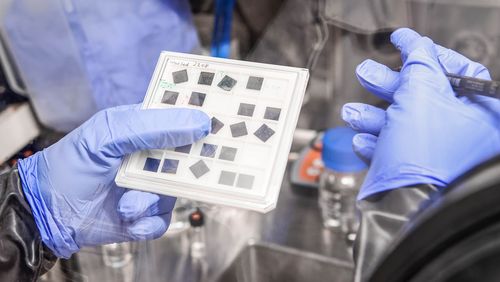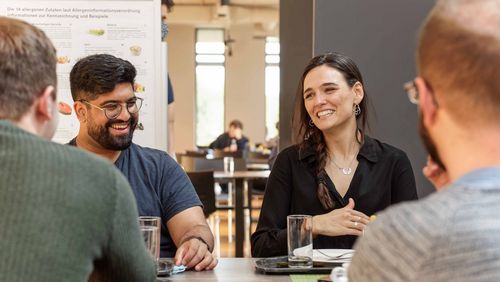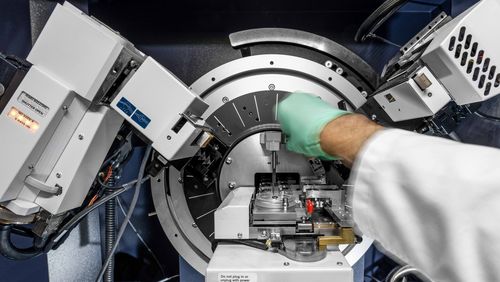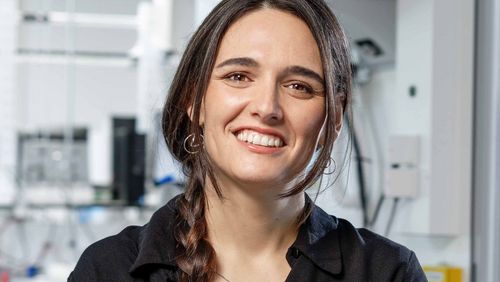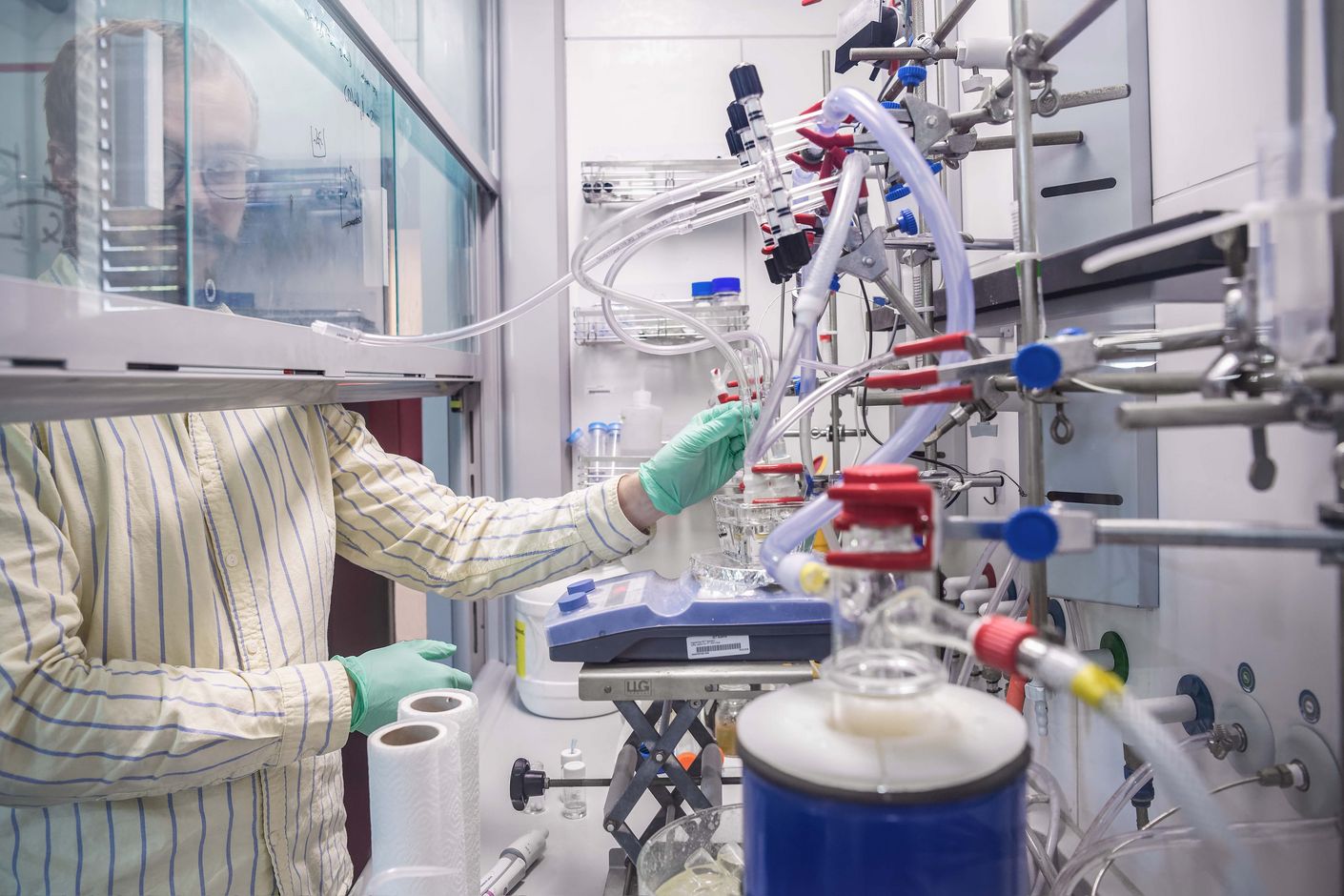
Controlled impurities
In theory, thermoelectric materials are capable of converting temperature differences found anywhere—whether in car engines, refrigerators or water pipes—into electricity. In practice, however, these materials are still too inefficient and costly for wider application. Now, physicist Maria Ibáñez and her research group at IST Austria are working to develop optimised thermoelectric materials that can generate electricity from everyday appliances and devices.
Since February of 2021, the Mars rover Perseverance has been pottering about on our neighbouring planet, collecting rock and soil samples and seeking evidence of former life. Everything on the tireless multitasker, including the robot’s cameras and measurement systems, is powered by a thermoelectric generator. The device operates on the basis of a special material that can harvest electricity from temperature differences: highly energetic electrons move from the warm side of the material to the cold side, thereby generating electric voltage. Although thermoelectric energy sources like this are durable and reliable, present-day materials are also inefficient and expensive. As a rule, they are used only when no other energy source is available and when the costly expenditures are insignificant in relation to the entire project—as is the case with space exploration.
In search of ideal materials
Maria Ibáñez wants this to change. As head of the Werner Siemens Foundation Center for Research in Thermoelectric Materials at the Institute of Science and Technology Austria (IST Austria), she aims to develop novel thermoelectric materials capable of converting temperature differences found in a wide variety of ordinary devices and appliances into electricity. There are numerous possibilities, Ibáñez says: “We could use the cold in refrigerators or the waste heat from computers or car engines.”
The physics professor and her interdisciplinary research group are currently synthesising numerous potential thermoelectric materials and changing their molecular structure to give them the desired properties.
“Because the principle functions on the basis of temperature differences, a thermoelectric material needs to simultaneously conduct electricity well but heat poorly,” Ibáñez explains. Moreover, the material should generate the maximum possible amount of electrical power from an existing temperature difference.
Aqueous solutions
To develop cost-effective thermoelectric materials, Ibáñez is eschewing customary production methods that require either high pressure or high temperatures. Rather, she uses aqueous solutions to manufacture materials with precisely defined nanostructures, and this at temperatures below the one-hundred-degree Celsius mark.
Her team has recently garnered promising results using tin selenide (SnSe), the most powerful thermoelectric material known. In the past, tin selenide has been produced and tested in the form of single crystals, a complex and expensive process. In just a short time, however, Ibáñez has succeeded in submitting several publications on her aqueous tin selenide synthesis.
New lab, state-of-the-art equipment
Her new material, a powder made of nanocrystals, cannot quite match the performance of the single-crystal form, but not much is lacking. Ibáñez is satisfied: “Developing this new material has taught us a great deal about the subtleties of the synthesis and the reasons for its weaker performance.” Analyses conducted by the physicist and her team have revealed that impurities had crept into their synthesis: ions had bonded with the material particles, thus influencing the thermoelectric output. “Equipped with this knowledge, we can now try to control these ions in the manufacturing process and even make them work to our advantage. It’s possible that they can actually boost the efficiency of the synthesis,” Ibáñez explains.
These insights will also prove valuable when researching other families of materials. Ibáñez is currently designing a high-throughput infrastructure for the new lab she plans to move into at the end of 2021. There, her group will be able to pursue a number of routes as they develop and analyse several different materials at the same time—and make even swifter progress than in the past.
Text: Santina Russo
Photos: Felix Wey



